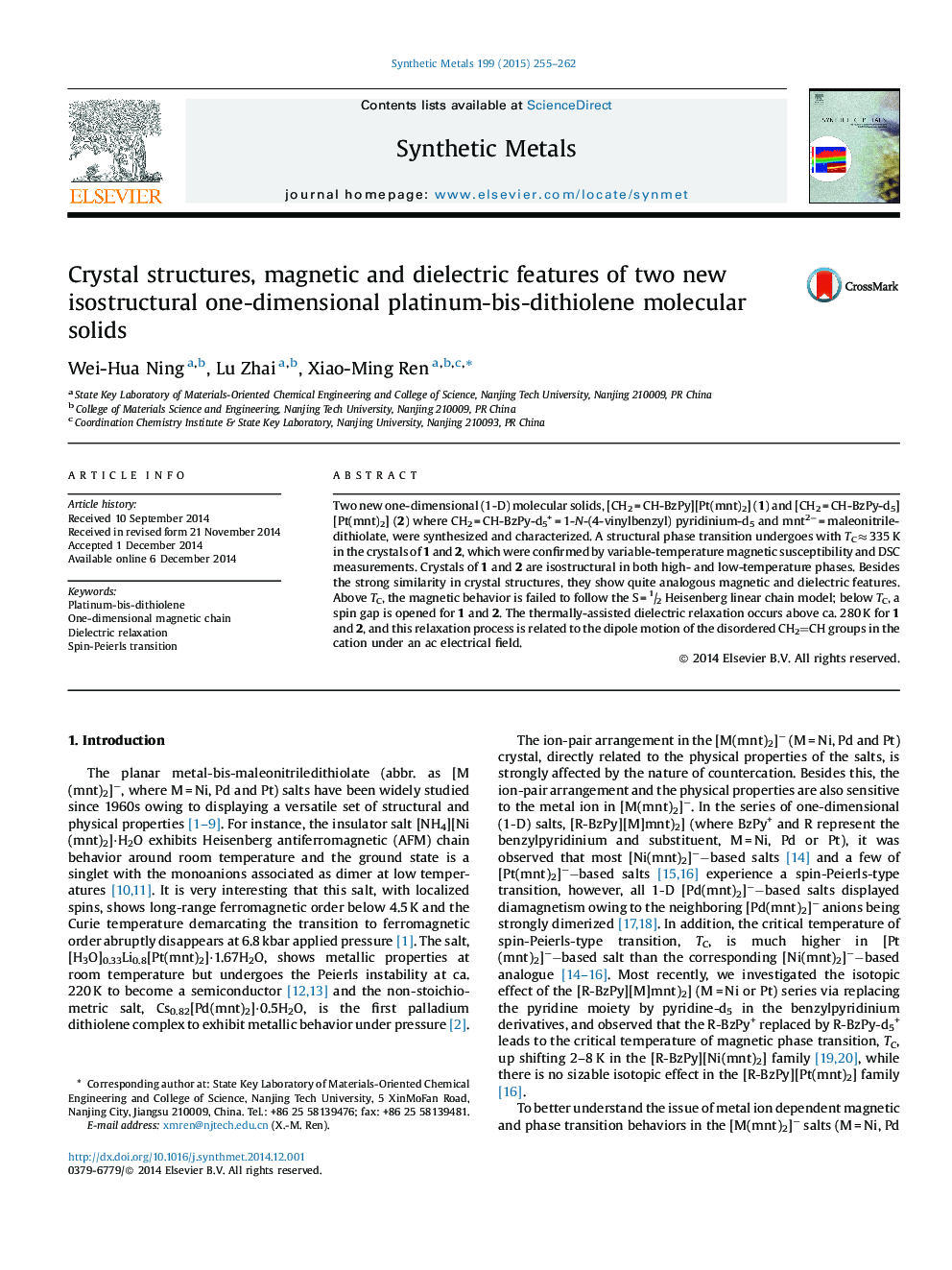| Article ID | Journal | Published Year | Pages | File Type |
|---|---|---|---|---|
| 1440799 | Synthetic Metals | 2015 | 8 Pages |
•Two new one-dimensional molecular solid were achieved.•The molecular solids show a magnetostructural transition with TC = ∼335 K.•The magnetostructural transition is not coupled with the dielectric anomaly.•There exists thermal-assisted dielectric relaxation behavior above 280 K in molecular solids.
Two new one-dimensional (1-D) molecular solids, [CH2 = CH-BzPy][Pt(mnt)2] (1) and [CH2 = CH-BzPy-d5][Pt(mnt)2] (2) where CH2 = CH-BzPy-d5+ = 1-N-(4-vinylbenzyl) pyridinium-d5 and mnt2− = maleonitriledithiolate, were synthesized and characterized. A structural phase transition undergoes with TC ≈ 335 K in the crystals of 1 and 2, which were confirmed by variable-temperature magnetic susceptibility and DSC measurements. Crystals of 1 and 2 are isostructural in both high- and low-temperature phases. Besides the strong similarity in crystal structures, they show quite analogous magnetic and dielectric features. Above TC, the magnetic behavior is failed to follow the S = ½ Heisenberg linear chain model; below TC, a spin gap is opened for 1 and 2. The thermally-assisted dielectric relaxation occurs above ca. 280 K for 1 and 2, and this relaxation process is related to the dipole motion of the disordered CH2CH groups in the cation under an ac electrical field.
Graphical abstractTwo isostructural one-dimensional S = ½ molecular solids, [CH2 = CH-BzPy][Pt(mnt)2] (1) and [CH2 = CH-BzPy-d5][Pt(mnt)2] (2), show strong similarity in the structural, magnetic and dielectric natures.Figure optionsDownload full-size imageDownload as PowerPoint slide
